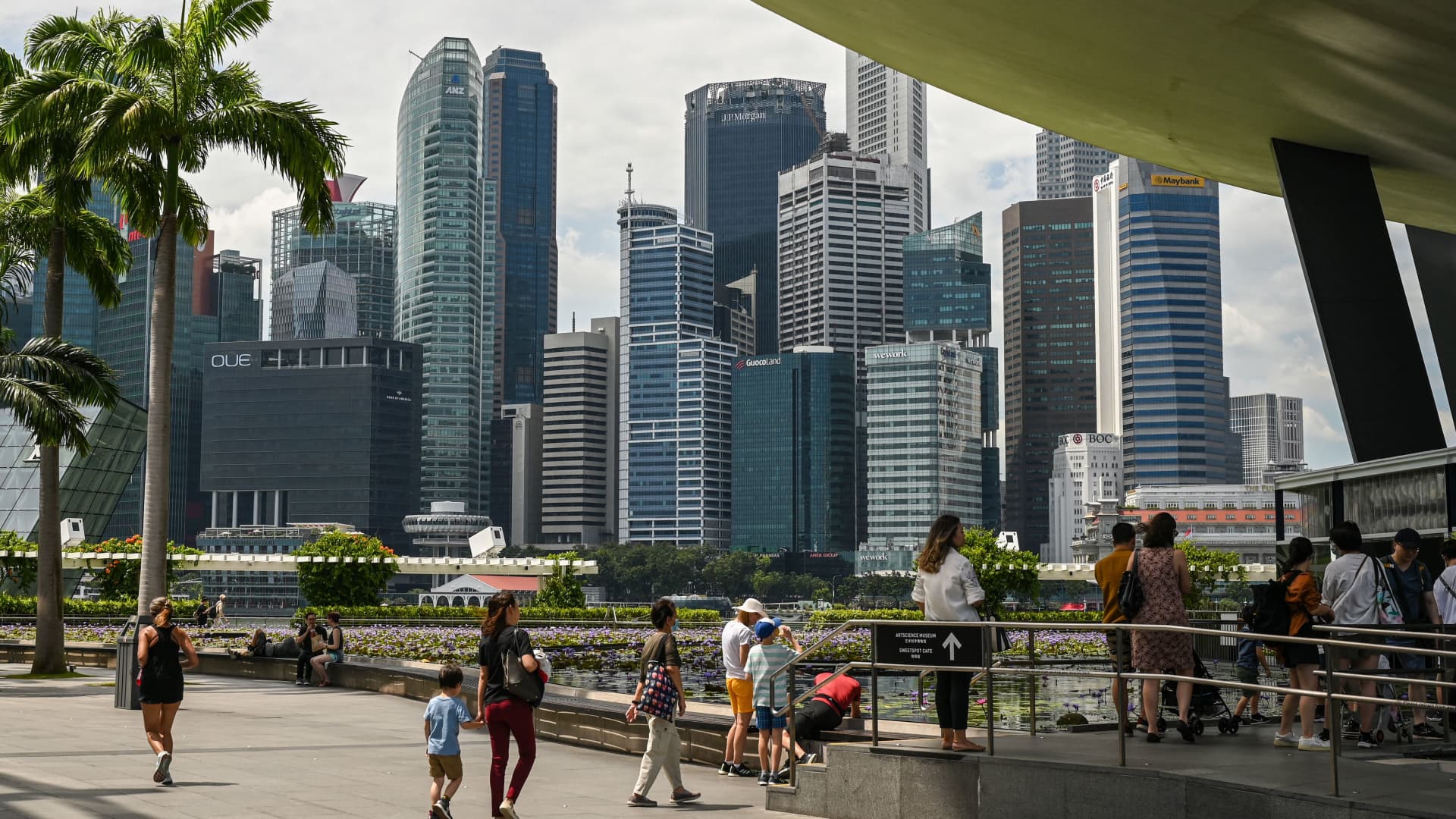SINGAPORE — Singapore is set to allow non-fully vaccinated travelers to enter the country without a negative pre-departure test from next week, health authorities announced Thursday.
The country is set to remove mask-wearing on public transport from Monday, as it seeks to exit the “acute phase” of the pandemic, said the Ministry of Health.
The country’s Covid task force, created in January 2020, will be deactivated.
“Our Covid situation has remained stable over the recent months, despite increased travel over the year and holidays and China’s shift from zero Covid,” said Singapore’s deputy prime minister Lawrence Wong, who is also co-chair of the Covid task force.
“Our population has developed a high level of hybrid immunity. The risk of infections leading to severe illness or deaths is very low — comparable to other endemic respiratory diseases like influenza.”
The further relaxation of pre-departure travel and mask requirements are “significant steps” that mark Covid-19 as an endemic and “new norm” for Singapore.
Changes to travel
All travelers entering Singapore via air or sea must still to submit a health declaration before or on arrival, said the ministry.
In addition to removing the need to show proof of a negative pre-departure test, short-term visitors will also not be required to buy Covid travel insurance.
Previously, non-fully vaccinated visitors were required to test negative for Covid within 2 days prior to their departure for Singapore.
While travelers who are not fully vaccinated can now enter Singapore without pre-departure tests, vaccinated travel lanes will remain “for reactivation,” should there be international developments of concern such as new variants, authorities said.
Singapore opened vaccinated travel lanes in April 2022 to facilitate safe resumption of international travel.
After locking down large parts of the city-state and ramping up travel and dining restrictions at the start of the pandemic in 2020, Singapore began lifting most of its Covid restrictions in April.
Further Covid measures were eased at the end of August, as authorities removed indoor mask requirements and allowed non-fully vaccinated travelers to skip quarantine on arrival.
Mask-wearing rules ease
Mask-wearing on public transport and indoor health settings will no longer be mandatory, but Wong encouraged the public to continue wearing masks if they showed any symptoms.
However, mask-wearing is still required be in places like hospital wards, clinics and nursing homes, where there is “interaction with patients” and “indoor patient-facing areas,” the health ministry said.
“This is to better protect patients and healthcare workers from infectious diseases in general,” it added.
The Ministry of Health said that private enterprises may also choose to maintain mask-wearing requirements as company policy for workplace health and safety, or “business continuity reasons.”
Back to pre-pandemic levels
Singapore will further downgrade its disease outbreak response, bringing it back to pre-pandemic levels.
As such, Singapore’s Multi-Ministry Taskforce — formed in January 2020 in response to Covid-19 — will also stand down.
The framework, known locally as Disease Outbreak Response System Condition (DORSCON), will be adjusted to green from yellow. That indicates the disease is mild and there is minimal disruption to daily life.
The color-coded system starts from green at the lowest level, to yellow, orange and red — the highest risk level. At the height of the pandemic, Singapore raised the level to orange.
Singapore reported 377 cases of Covid-19 on Wednesday, with infections continuing to fall from a record 26,032 cases nearly a year ago on Feb. 22.
Most of those infected in Singapore have had mild or no symptoms.
According to the Ministry of Health, around 92% of the population has completed the primary vaccination series as of January, while 83% has “minimum protection” — which refers to the primary series and first booster shot.
As of Feb. 7, only 48% has received up-to-date vaccination, which means receiving a second booster dose between five months to one year from the first.
